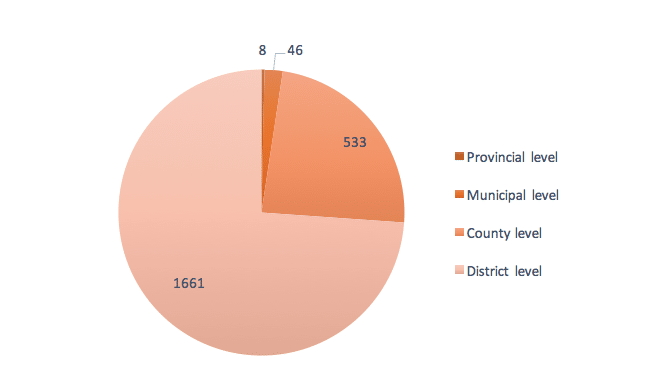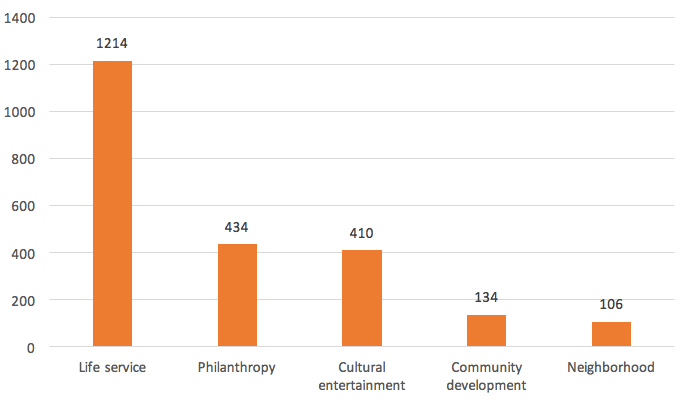China’s 12th National Five-year Economic and Social Development Plan Outlines, valid for 2011-2015, referred to urban and rural community social organizations (社区社会组织) as especially significant among social organizations. A report by the China Philanthropy Research Institute of BNU outlines some of the main characteristics of the development of such organizations over the first nine months of 2018.
1. The state at the central and local levels has launched policy documents to promote the development of community social organizations. The Ministry of Civil Affairs launched an official document entitled Opinions on the Development of Community NGOs on December 1, 2017. This document indicates that the government will devote more efforts and increase support to help community social organizations. Based on this document many provinces, including Fujian, Guangdong, Gansu, Guizhou, Ningxia, Hubei, Shandong and Anhui, launched related documents focusing on local community social organizations.
2. According to the data from the China Social Organization Network, 2248 community social organizations have registered over the country in 2018. Out of these 2248 registered organizations most are registered at the district level, making up 73.9% of the total. Organizations registered at the provincial level occupy the lowest ratio, with only 0.4% of the total amount. As for organizations registered at the municipal and county levels, they account for 2% and 23.7% of the total respectively.

3. Organizations offering “life services” (生活服务) make up more than half of all the community social organizations, including 1214 organizations or 54% of the total. Organizations servicing domains involving philanthropy and “cultural entertainment” (文体娱乐) account for 19.3% and 18.2% of the total. Organizations focusing on community development and neighbourhood mutual aid (居民互助) have relatively small numbers, only taking up 6% and 4.7% of the total.

4. For community social organizations of all kinds, specific groups including the elderly, the disabled, children and women are the key targets. Organizations which provide services for the elderly make up one fourth of the total, or 536 organizations.



